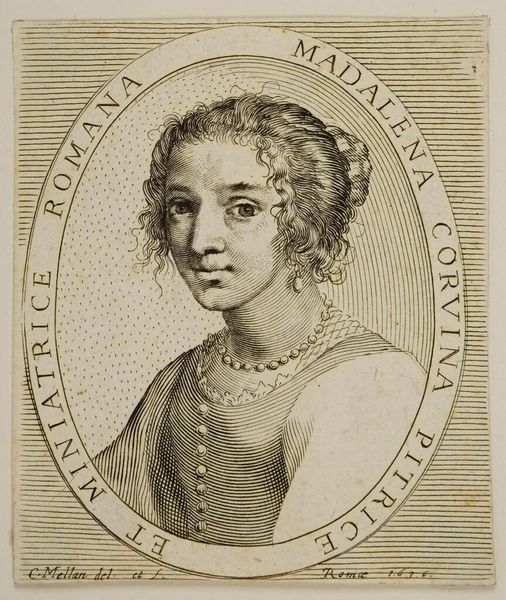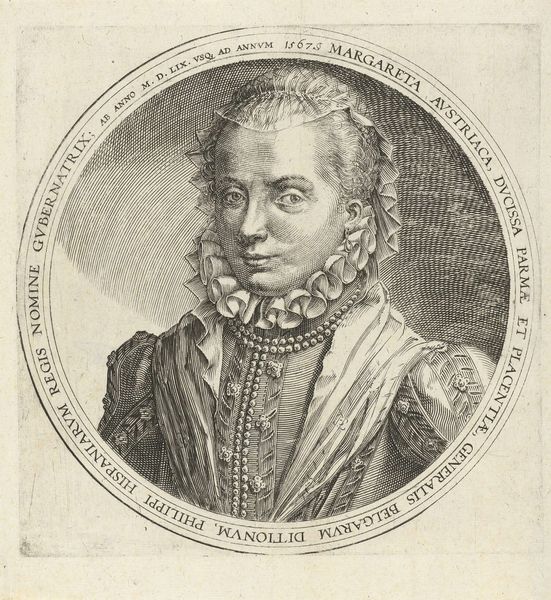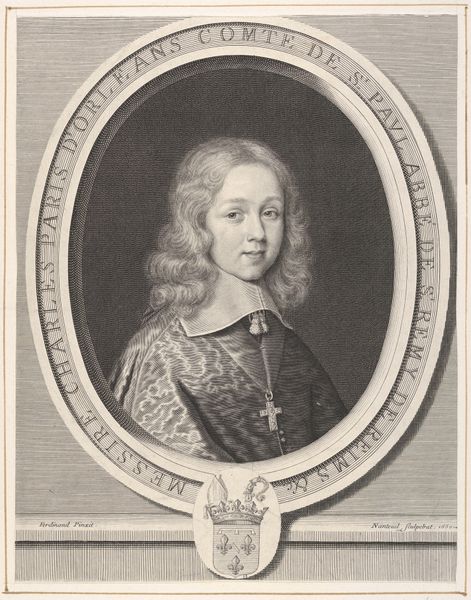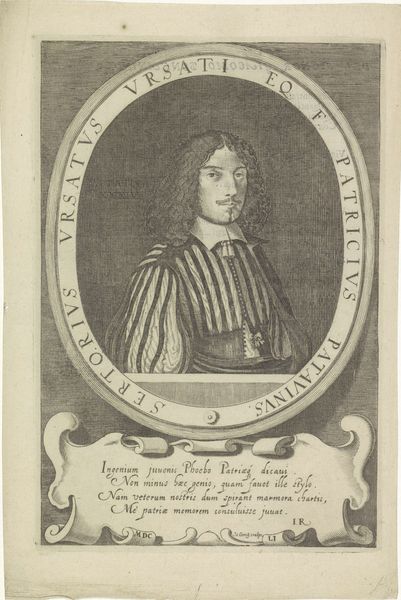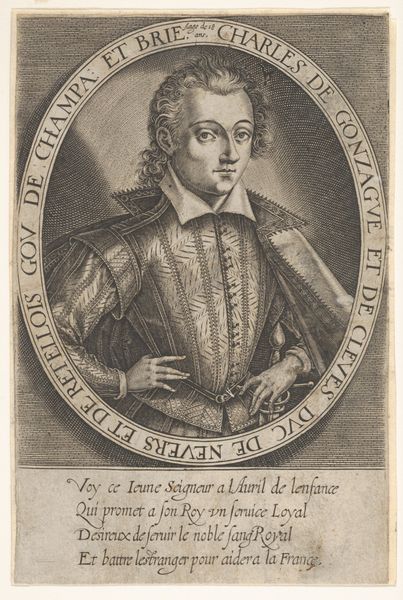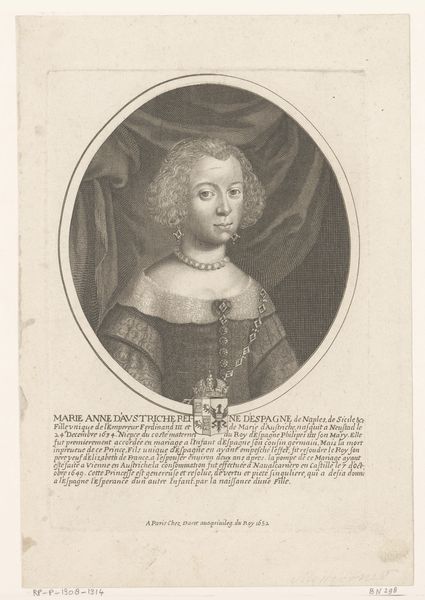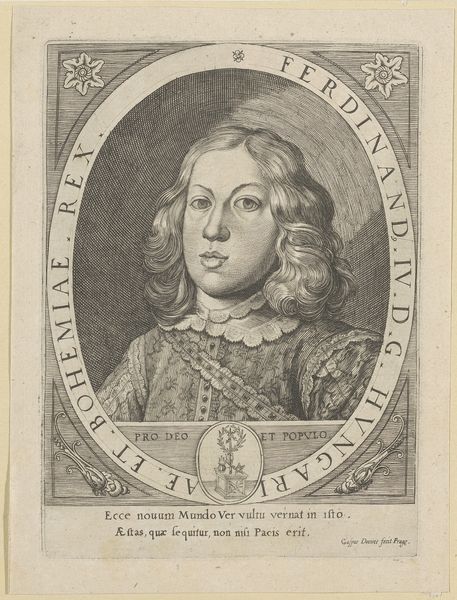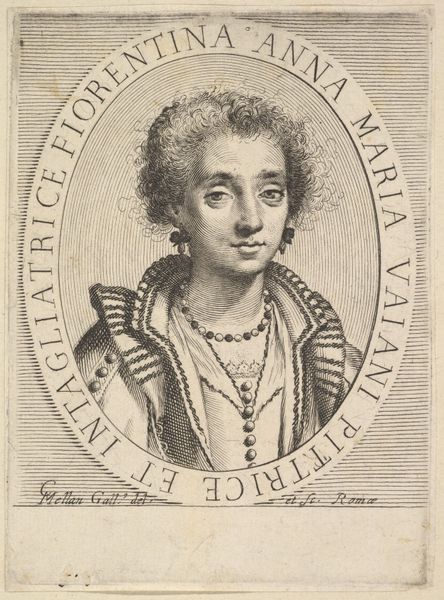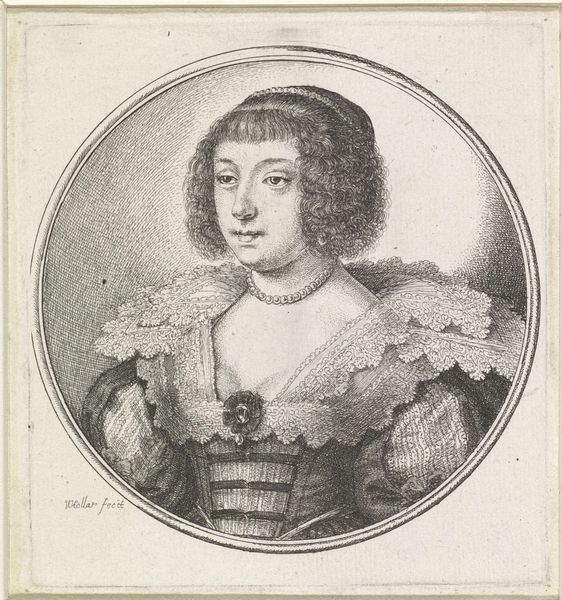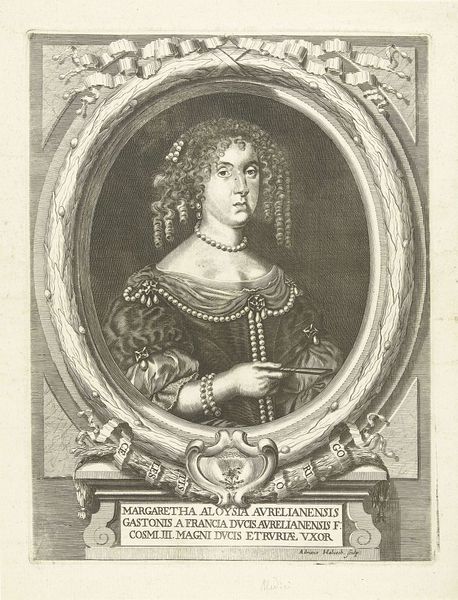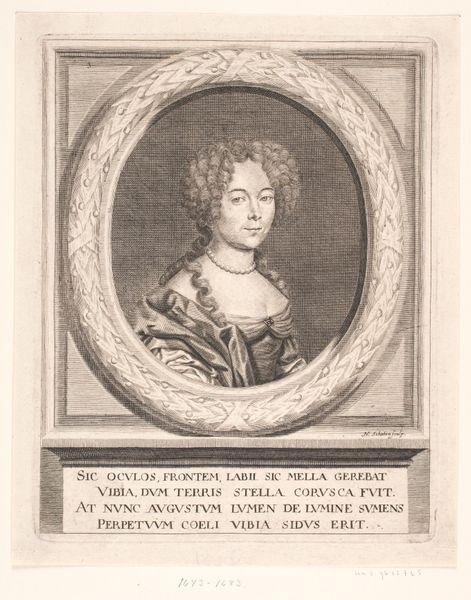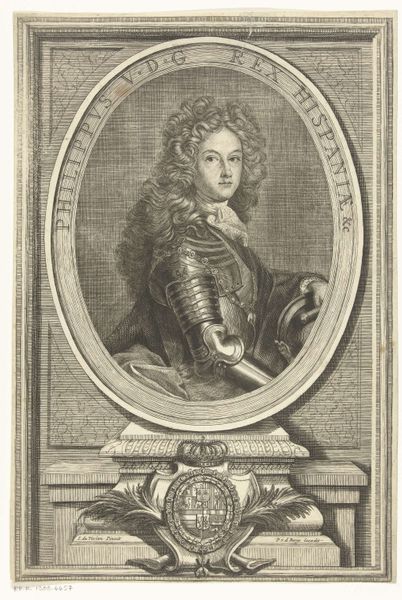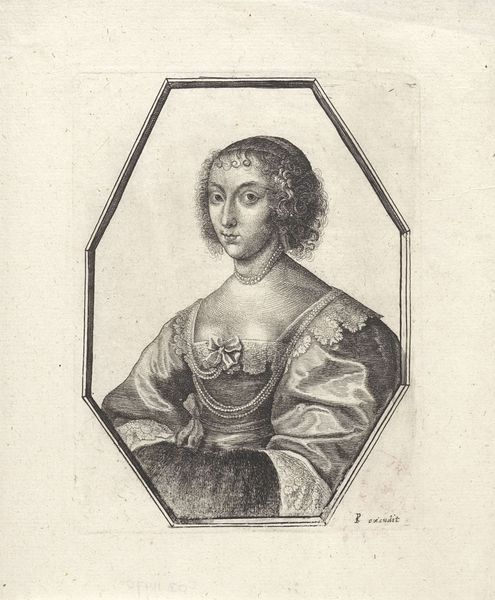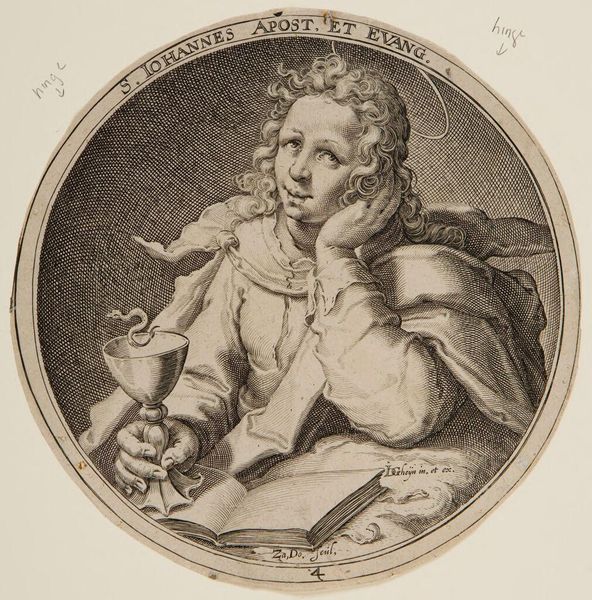
print, etching, engraving
#
portrait
#
baroque
# print
#
etching
#
engraving
Dimensions: plate: 11.7 x 8.5 cm (4 5/8 x 3 3/8 in.) sheet: 12.8 x 9.9 cm (5 1/16 x 3 7/8 in.)
Copyright: National Gallery of Art: CC0 1.0
Editor: Here we have Claude Mellan's "Maddalena Corvina," an etching and engraving from 1636. I’m immediately struck by the contrast. The soft, almost vulnerable expression on her face is juxtaposed with the formality of the oval frame and the precise lines of the engraving. How do you interpret this work, especially considering the details of her portrayal and its context? Curator: This print allows us to explore the social construction of female identity in 17th-century Rome. Maddalena Corvina, identified in the inscription as a "miniaturist" and "Roman painter," occupied a specific, and likely precarious, position in the art world. Note the subtle tension between her self-assured gaze and the idealised beauty standards enforced through portraiture. Does this image confirm those standards, or subtly challenge them? Consider how her artistic identity impacts your reading of her portrait. Editor: That's interesting. It’s easy to view portraits like this through a contemporary lens, but I never considered how her profession at the time influenced its reception. How much power could Corvina wield as a woman in this role, or how was she perceived professionally? Curator: That is an excellent question! Her inclusion within an artistic and intellectual network and her skills would give her access to an elite and powerful world, allowing her to exercise a certain level of independence, although of course within limits and expectations related to gender, class, and religious doctrine. However, you also must acknowledge that by naming herself "Roman Painter," there is agency there, but still we need to know more, because this piece really opens so many windows into discussions on intersectional theory. Editor: This print really invites many different levels of analysis. Curator: It does, doesn't it? A window into a specific moment in history, but also a mirror reflecting enduring questions of representation and identity.
Comments
No comments
Be the first to comment and join the conversation on the ultimate creative platform.
